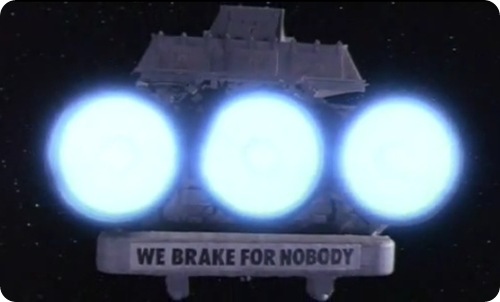
Breaking News
Living a Creative Life Maximizes Your Life
SEMI-NEWS/SEMI-SATIRE: November 9, 2025 Edition
 Trump pardons Mets legend, 'Celebrity Apprentice' alum Darryl Strawberry over tax evasion co
Trump pardons Mets legend, 'Celebrity Apprentice' alum Darryl Strawberry over tax evasion co
 You WON'T BELIEVE How Much Money We're REALLY Sending To Israel!
You WON'T BELIEVE How Much Money We're REALLY Sending To Israel!
Top Tech News
 HUGE 32kWh LiFePO4 DIY Battery w/ 628Ah Cells! 90 Minute Build
HUGE 32kWh LiFePO4 DIY Battery w/ 628Ah Cells! 90 Minute Build
 What Has Bitcoin Become 17 Years After Satoshi Nakamoto Published The Whitepaper?
What Has Bitcoin Become 17 Years After Satoshi Nakamoto Published The Whitepaper?
 Japan just injected artificial blood into a human. No blood type needed. No refrigeration.
Japan just injected artificial blood into a human. No blood type needed. No refrigeration.
 The 6 Best LLM Tools To Run Models Locally
The 6 Best LLM Tools To Run Models Locally
 Testing My First Sodium-Ion Solar Battery
Testing My First Sodium-Ion Solar Battery
 A man once paralyzed from the waist down now stands on his own, not with machines or wires,...
A man once paralyzed from the waist down now stands on his own, not with machines or wires,...
 Review: Thumb-sized thermal camera turns your phone into a smart tool
Review: Thumb-sized thermal camera turns your phone into a smart tool
 Army To Bring Nuclear Microreactors To Its Bases By 2028
Army To Bring Nuclear Microreactors To Its Bases By 2028
 Nissan Says It's On Track For Solid-State Batteries That Double EV Range By 2028
Nissan Says It's On Track For Solid-State Batteries That Double EV Range By 2028
Jerry Pournelle talks about China's orbital tests of the EMDrive as a bigger than Sputnik moment

https://en.wikipedia.org/wiki/RF_resonant_cavity_thruster
Jerry Eugene Pournelle (born August 7, 1933) is an American science fiction writer, essayist and journalist who contributed for many years to the computer magazine Byte. Pournelle was an intellectual protégé of Russell Kirk and Stefan T. Possony. Pournelle wrote numerous publications with Possony, including The Strategy of Technology (1970). The Strategy has been used as a textbook at the United States Military Academy (West Point), the United States Air Force Academy (Colorado Springs), the Air War College, and the National War College.
Pournelle worked in the aerospace industry includes time he worked at Boeing in the late-1950s. While there, he worked on Project Thor, conceiving of "hypervelocity rod bundles", also known as "rods from God". He edited Project 75, a 1964 study of 1975 defense requirements. He worked in operations research at The Aerospace Corporation, and North American Rockwell Space Division, and was founding President of the Pepperdine Research Institute. In 1989, Pournelle, Max Hunter, and retired Army Lieutenant General Daniel O. Graham made a presentation to then Vice President Dan Quayle promoting development of the DC-X rocket.

 Carbon based computers that run on iron
Carbon based computers that run on iron

